The pyramid complex of Meroe, located around 200 kilometers northeast of Khartoum in Sudan, consists of 900 large and small pyramids and tombs. Now a UNESCO World Heritage Site, the complex was built between 300 BC and 300 AD by the Cushitic rulers and their high-ranking officials.
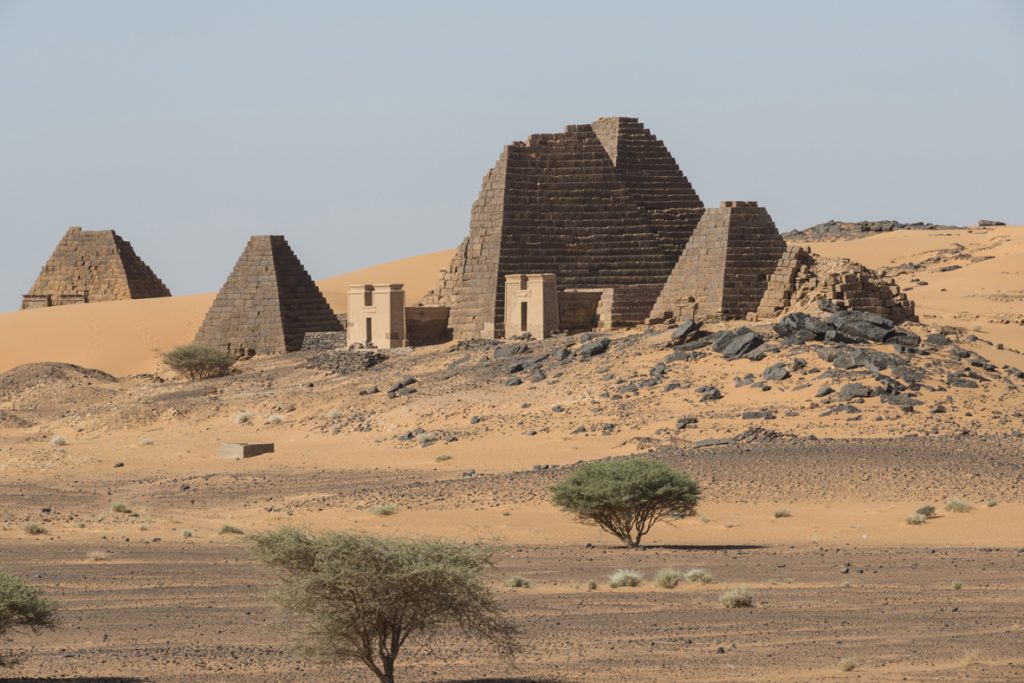
Many of the pyramids have been badly damaged by environmental influences as well as looting. Together with international specialists, the DAI has taken on the task of researching, documenting, and preserving this unique site. The sand dunes, which have drifted over the past fifty years, are being gradually removed and sensitive surfaces are being restored and preserved. Targeted plantings are meant to prevent further encroachment of sand.
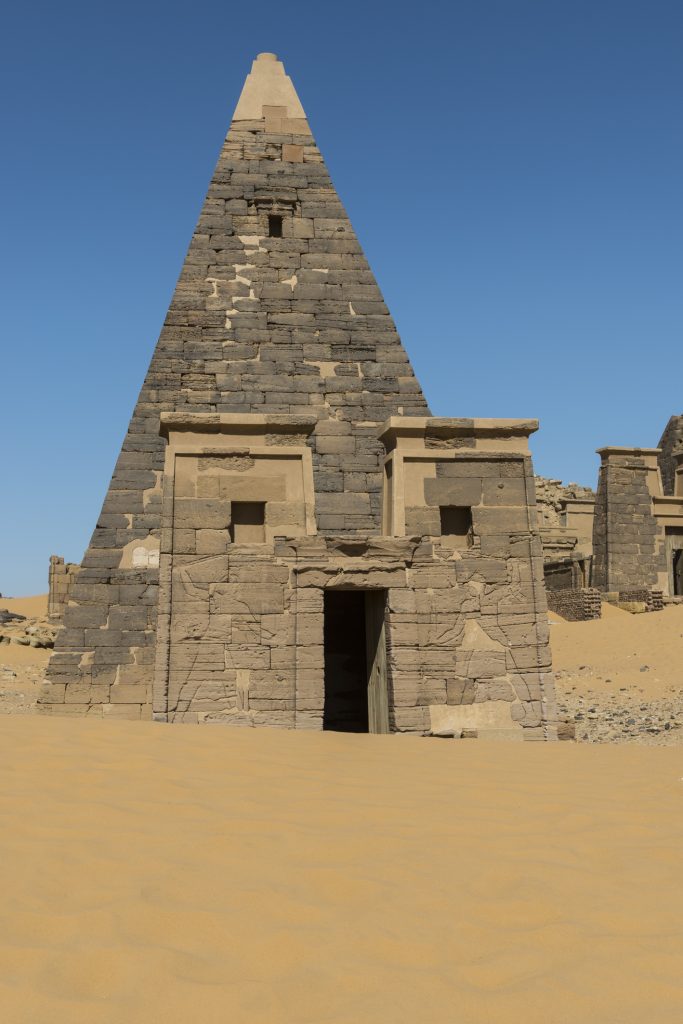
At an angle of 70 degrees, the walls of the pyramids rise steeply (Photo: Wagner, DAI) 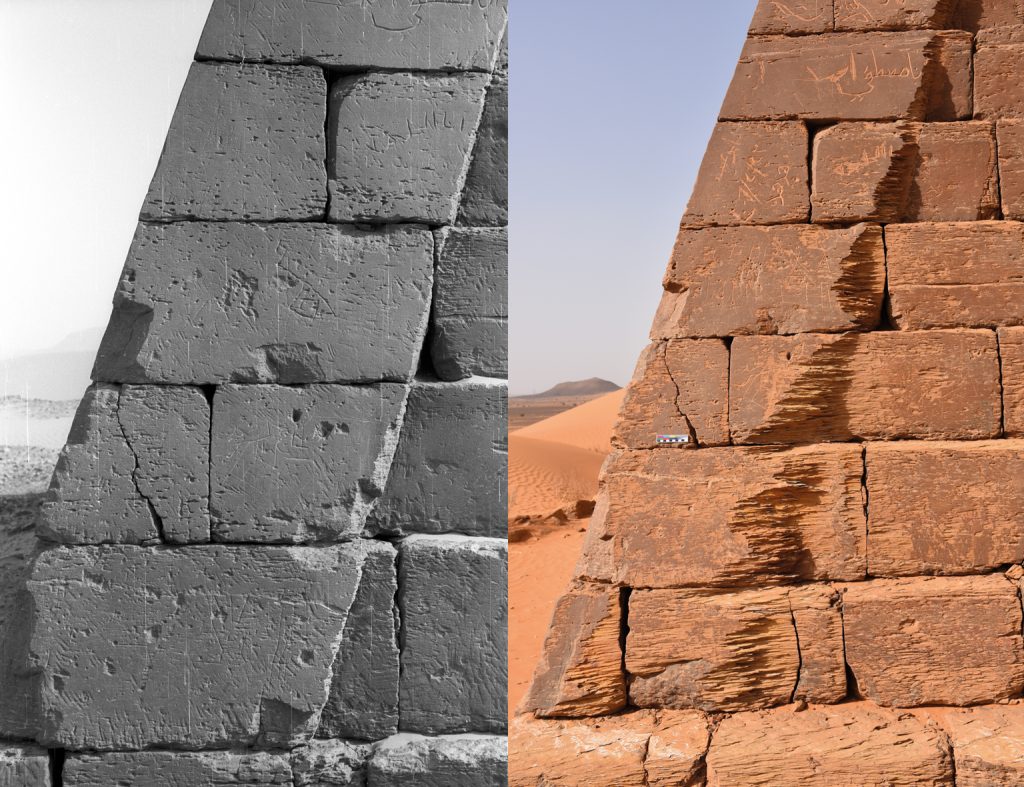
The most obvious sign of destruction of the pyramids is from the abrasion of sand on the corners of the monuments. These two photographs were taken 30 years apart (Photo left: F. Hinkel D-DAI-Z-Arch-FWH-F-KB-sw-541-21, 1985; Photo right: C. Kleinitz, 2015) 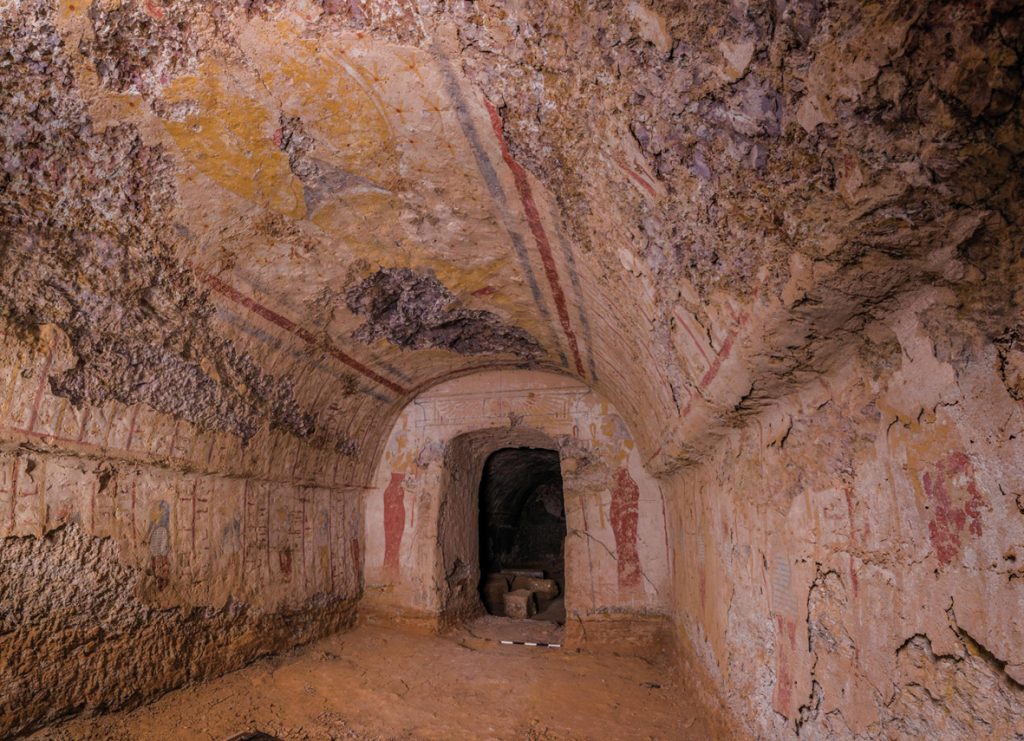
The underground burial chambers were elaborately decorated (Photo: S. Wolf, DAI) 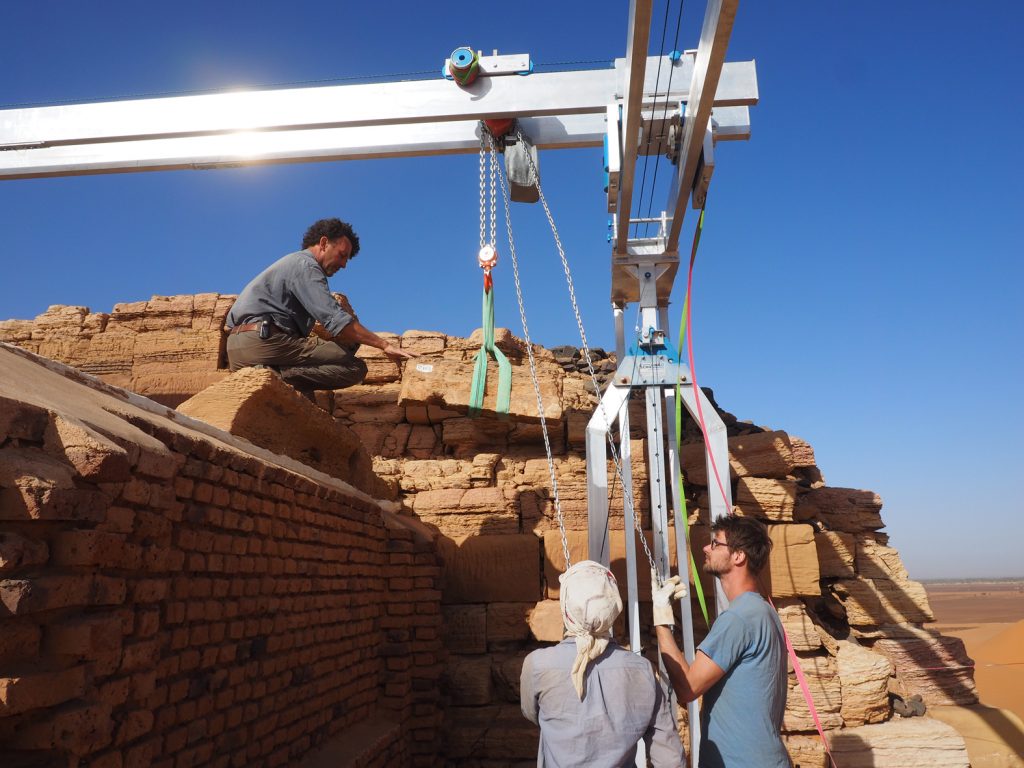
Various measures are helping preserve this unique cultural heritage site (Photo: Hamann, DAI)